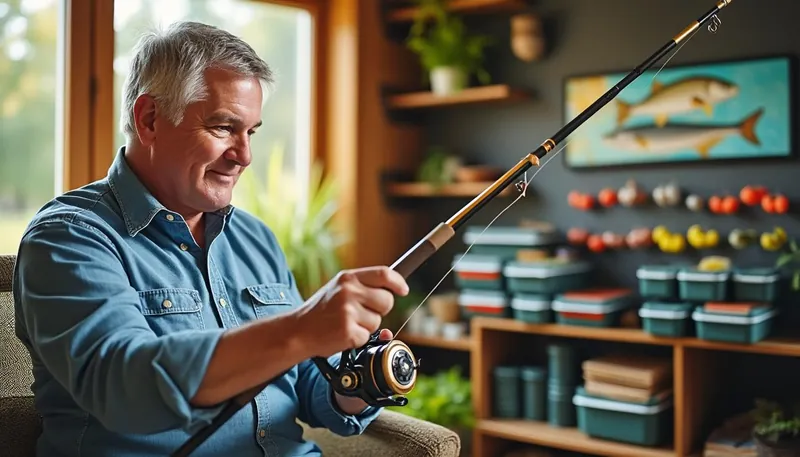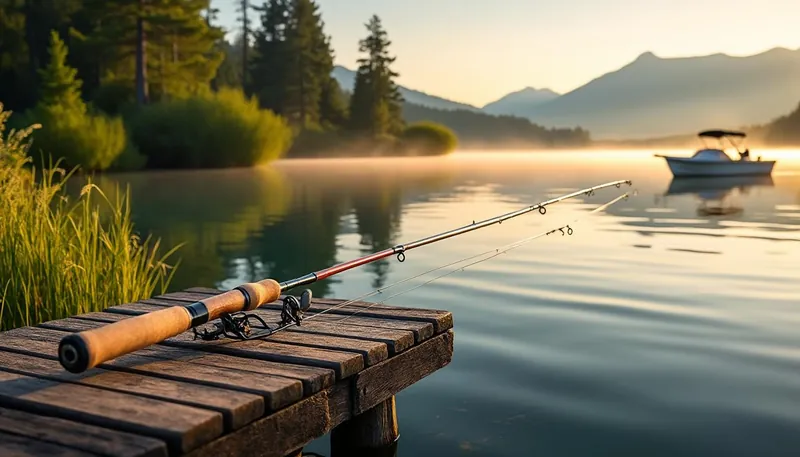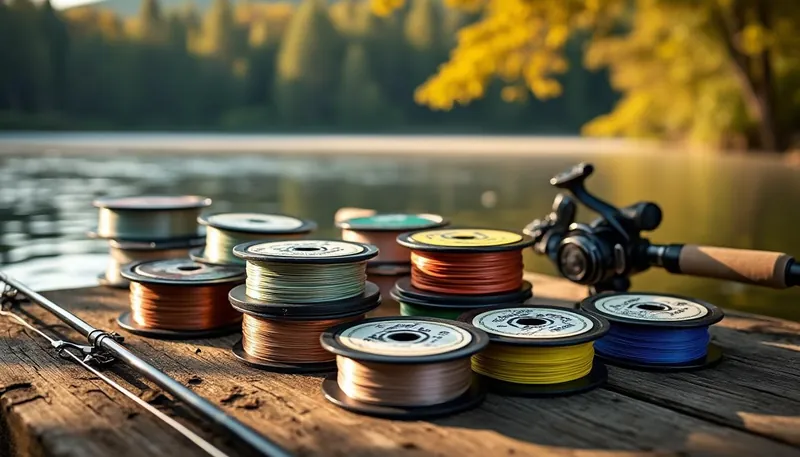Practicing casting without the need to be near water is not only practical but also an essential skill for any angler. The art of casting involves more than just flinging a line; it’s about precision, technique, and muscle memory. Whether you’re a seasoned fisherman or just starting out, honing your casting ability on dry land can dramatically increase your overall effectiveness and make your time on the water more enjoyable. In this guide, we’ll break down various techniques, tools, and tips for mastering your casting in a convenient and efficient manner.
Brief
- 🐟 Casting can be practiced effectively without water.
- 👟 Dry land practice builds muscle memory and technique.
- 📏 Essential equipment like practice plugs and targets enhance training.
- 🏞️ Find the right space for effective dry land casting.
- 📅 A consistent practice schedule is key to improvement.
Why Practice Casting on Dry Land?
Practicing casting on dry land offers several advantages that can greatly benefit anglers. First and foremost, it allows you to concentrate entirely on the mechanics of your casting without the distractions that come with fishing. You’re free from the pressure of trying to catch fish and can instead focus solely on perfecting your form.
Additionally, having the ability to practice in your own backyard or local park adds a level of convenience that can be hard to beat. This accessible training can save valuable time and keep you in a state of constant improvement, ensuring that when you do get to the water, your skills are sharp.
- 🧘♂️ Distraction-free: Focus entirely on technique
- 🏡 Convenience: Practice anywhere from your yard to local parks
- 🔄 Reinforcement: Builds muscle memory vital for accurate casting
- 🔧 Technique: Allows for immediate corrections and adjustments
Building Muscle Memory
Muscle memory is a fundamental aspect of any fine motor skill, including casting. You want your body to instinctively understand how to move during a cast, which is why repetitive dry land practice is so effective. As you cast, your brain records the motions of the wrist, shoulders, and grip, helping you create a consistent and effective casting stroke.
When you do transition to water, this ingrained muscle memory will allow you to cast with greater accuracy and confidence. It has been shown that practicing on dry land can sometimes yield better results than practice over water, as the environment is controlled, minimizing variables that could interfere with learning.
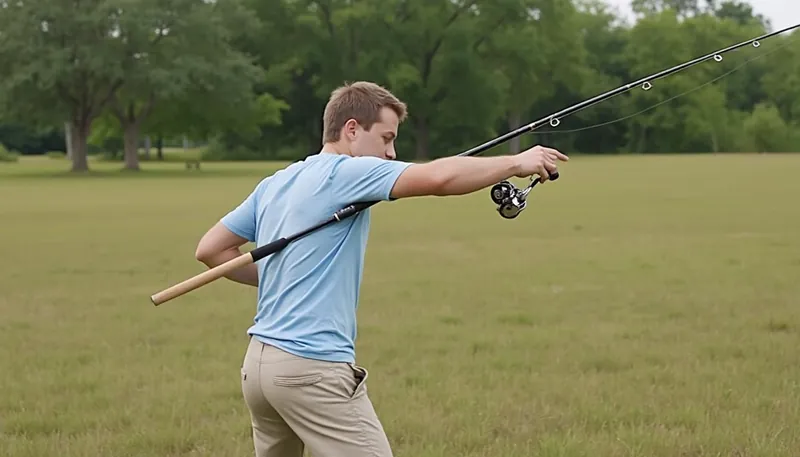
Real-Time Feedback
Practicing casting on dry land gives you real-time feedback, unlike when you’re trying to catch fish on the water. You can work on specific techniques, such as timing, power, and accuracy, and immediately correct mistakes. This kind of focused feedback loop is essential for improvement.
| Aspect | Water Practice | Dry Land Practice |
|---|---|---|
| Distraction Level | High | Low |
| Immediacy of Corrections | Delayed | Immediate |
| Focus on Technique | Varied | Focused |
| Cost | Higher (licenses, travel) | Minimal (home or local) |
Essential Equipment for Dry Land Practice
To get the most out of your dry land practice sessions, having the right equipment is vital. Basic fishing gear like your fly rod, line, and leader is necessary, but additional tools can enhance your training experience.
Some anglers find that using practice plugs or casting weights, which mimic the feel of actual lures without the risks associated with hooks, makes a significant difference. Additionally, yarn flies are perfect for fly fishing practice as they provide weight and wind resistance without the danger of hooks. Furthermore, simple targets like hula hoops or buckets can help create an engaging accuracy challenge.
- 🎣 Practice Plugs: Essential for simulating lure weight
- 🧶 Yarn Flies: Safe and effective for fly casting practice
- 🎯 Targets: Use hula hoops, buckets, or paper plates for accuracy drills
- 📏 Measuring Tape: To track your casting distance and accuracy over time
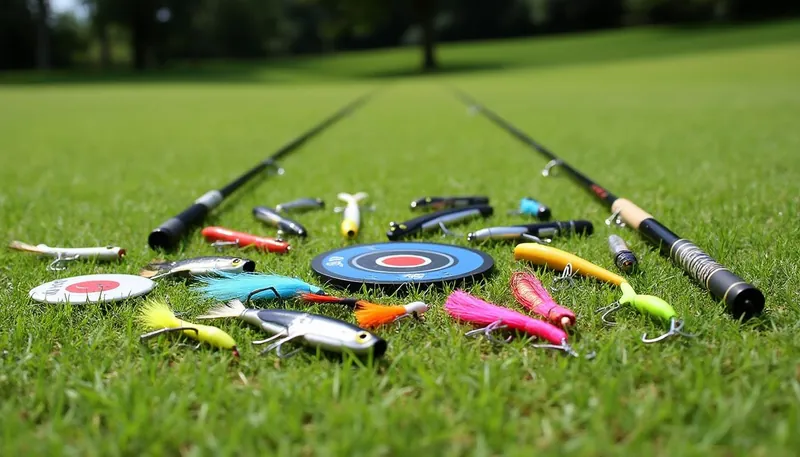
Choosing Your Targets
Establishing targets at various distances can help you work on both distance and accuracy in your practice. Start by positioning targets close, and as your skills improve, gradually move them further away. This incremental approach allows you to build confidence while continuously challenging yourself.
Tracking Improvement
Keeping a journal or using an app to log your practice can be incredibly beneficial. Record the distances you’re able to hit and any adjustments you made to your technique. This not only serves as a motivator but also provides insight into your developmental areas.
Setting Up Your Practice Space
To achieve the best results from your practice, finding or setting up an appropriate practice area is crucial. You don’t need a sprawling field; a clear area of roughly 30 feet by 15 feet should suffice for most types of casting practice. If you’re into fly fishing, seek out spaces that are free from overhead obstacles.
In your practice space, place targets at various distances and remember to secure your surroundings. Make sure you’re practicing in a safe area—keeping pedestrians and fragile items out of your casting zone is key to avoiding accidents.
- 🌳 Clear Space: Ensure an unobstructed area for casting
- 🧭 Target Placement: Start close, move further as accuracy improves
- ⚠️ Safety: Choose a location away from people and fragile objects
Adapting to Space Condition
If you’re practicing indoors or in a limited space, consider alternative setups. Using a practice rod with a weighted end for spinning or baitcasting can simulate real casting action without taking up too much space. You might even find a hallway or large room allows for effective practice.
| Practice Type | Ideal Space | Tips |
|---|---|---|
| Fly Casting | Wide Open Area | Avoid overhead obstacles |
| Baitcasting | At least 30 x 15 feet | Start with heavier weights |
| Spinning | Similar to Baitcasting | Work on timing and distance |
| Indoor Practice | Large Room or Hall | Use lightweight practice gear |
Common Casting Mistakes and How to Fix Them
Every angler makes mistakes while learning to cast. However, identifying and addressing these issues during dry land practice can set you up for success. One prevalent mistake involves relying too much on wrist motion instead of using the forearm—this not only diminishes casting power but also decreases accuracy.
Another common error is an inconsistent angle when casting, as this can lead to misthrows. Aim for a 45-degree angle in standard casts. Instead of brute strength, focus on smooth acceleration for casting—these adjustments can lead to notable improvements.
- 📏 Angle Control: Ensure a proper casting angle at around 45 degrees
- 🤚 Arm Motion: Use your forearm for power over your wrist
- ⚡ Smoothness: Concentrate on fluid motions rather than force
Instant Correction Feedback
One of the benefits of practicing on dry land is the ability to immediately correct mistakes. As you make adjustments, whether they involve timing, strength, or angle, you will notice improvements quickly, reinforcing the learning process and enabling you to further refine your skills.
Utilizing Technology
In this modern age, technology can also play a crucial role in improving your casting technique. Many anglers record their casting sessions to spot flaws in their technique. With mobile apps designed for casting analysis, you can track metrics and receive feedback, which offers insights into areas needing improvement.
Can I practice casting indoors?
Yes, practicing casting indoors is possible. Ensure you have enough space and use lightweight and safe practices like yarn flies or a practice rod.
How often should I practice casting?
It’s beneficial to practice consistently. Aim for several short sessions per week rather than occasional long ones. Regular practice solidifies your technique.
What can I use as targets?
You can use various objects such as buckets, hula hoops, or paper plates to set targets for your casting practice.
What’s the best casting type for beginners?
For beginners, starting with spinning reel casting is often recommended as it tends to be more straightforward to master compared to baitcasting or fly casting.
